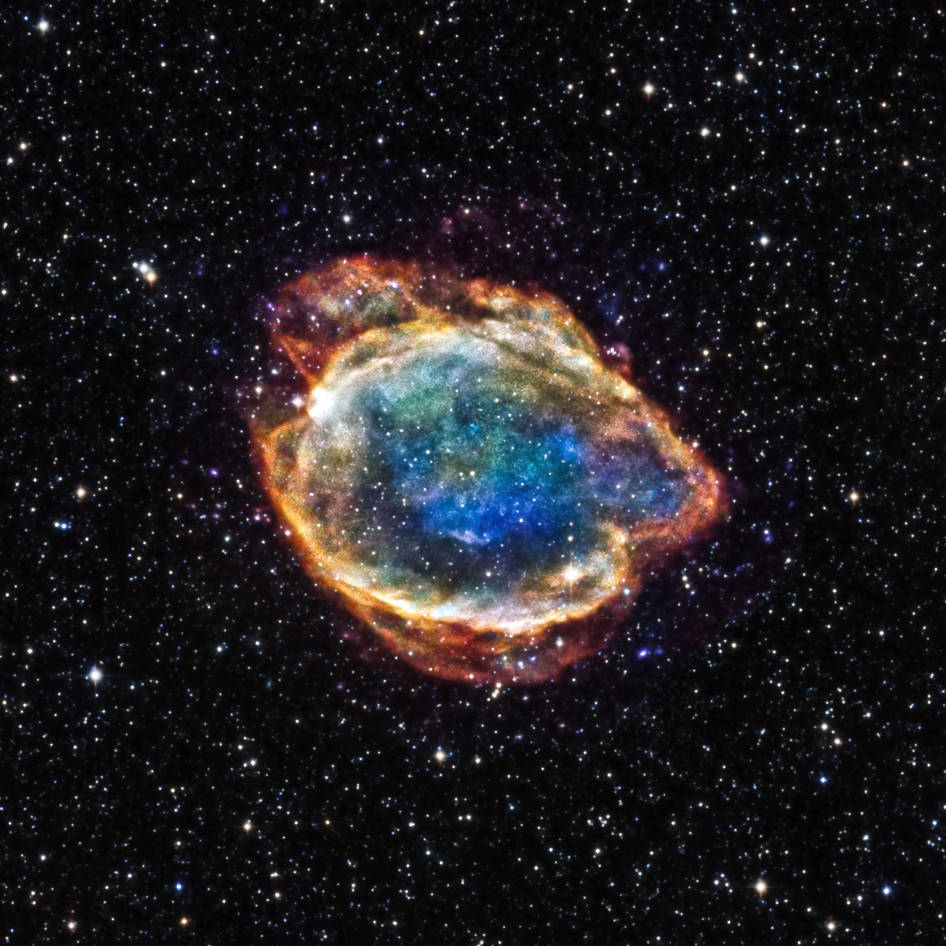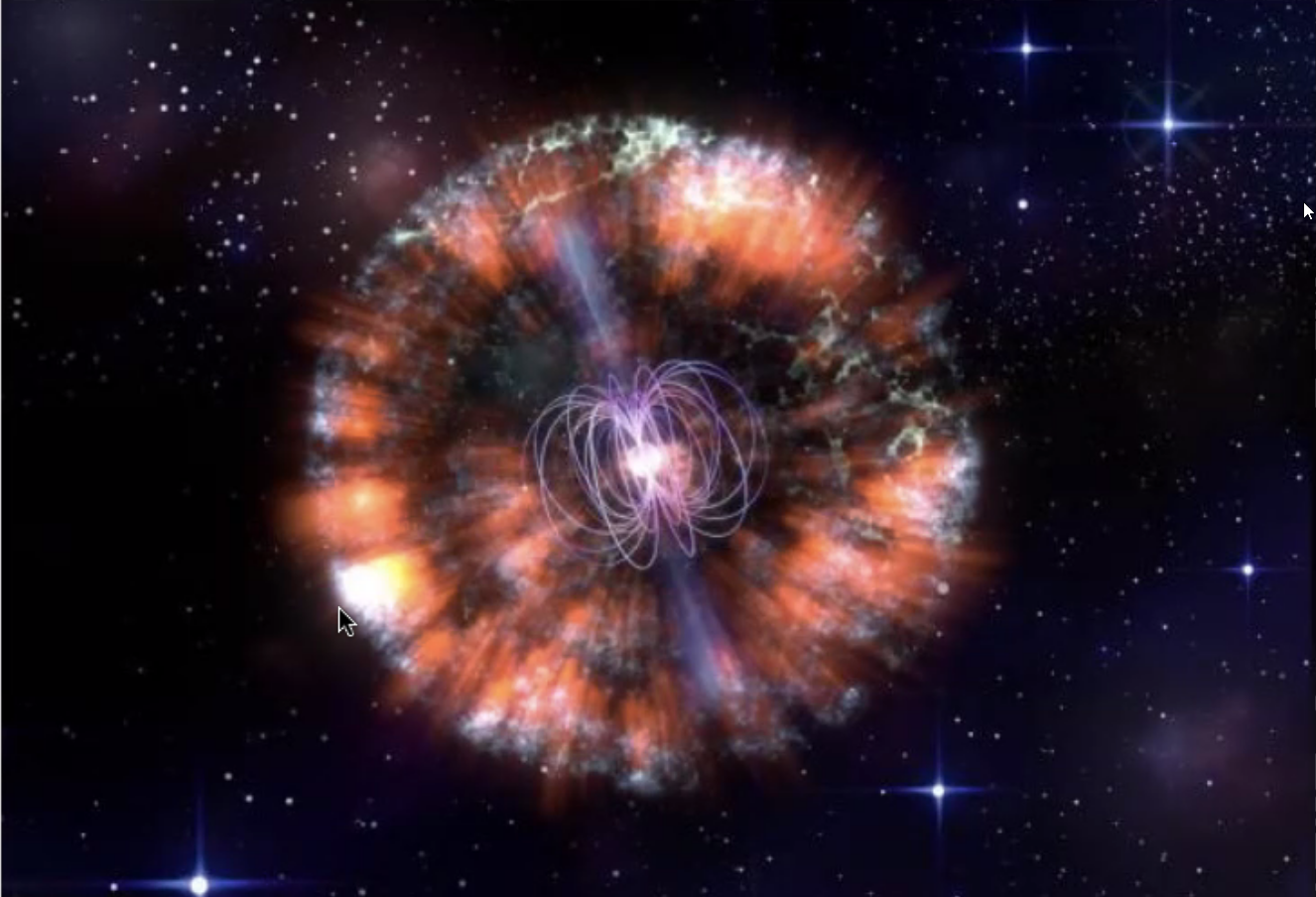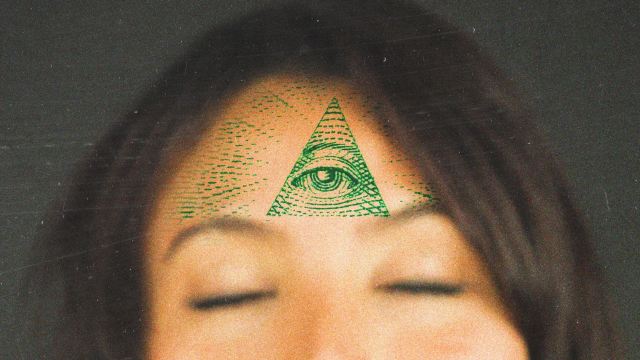Ask Ethan: Can companion stars survive a supernova?
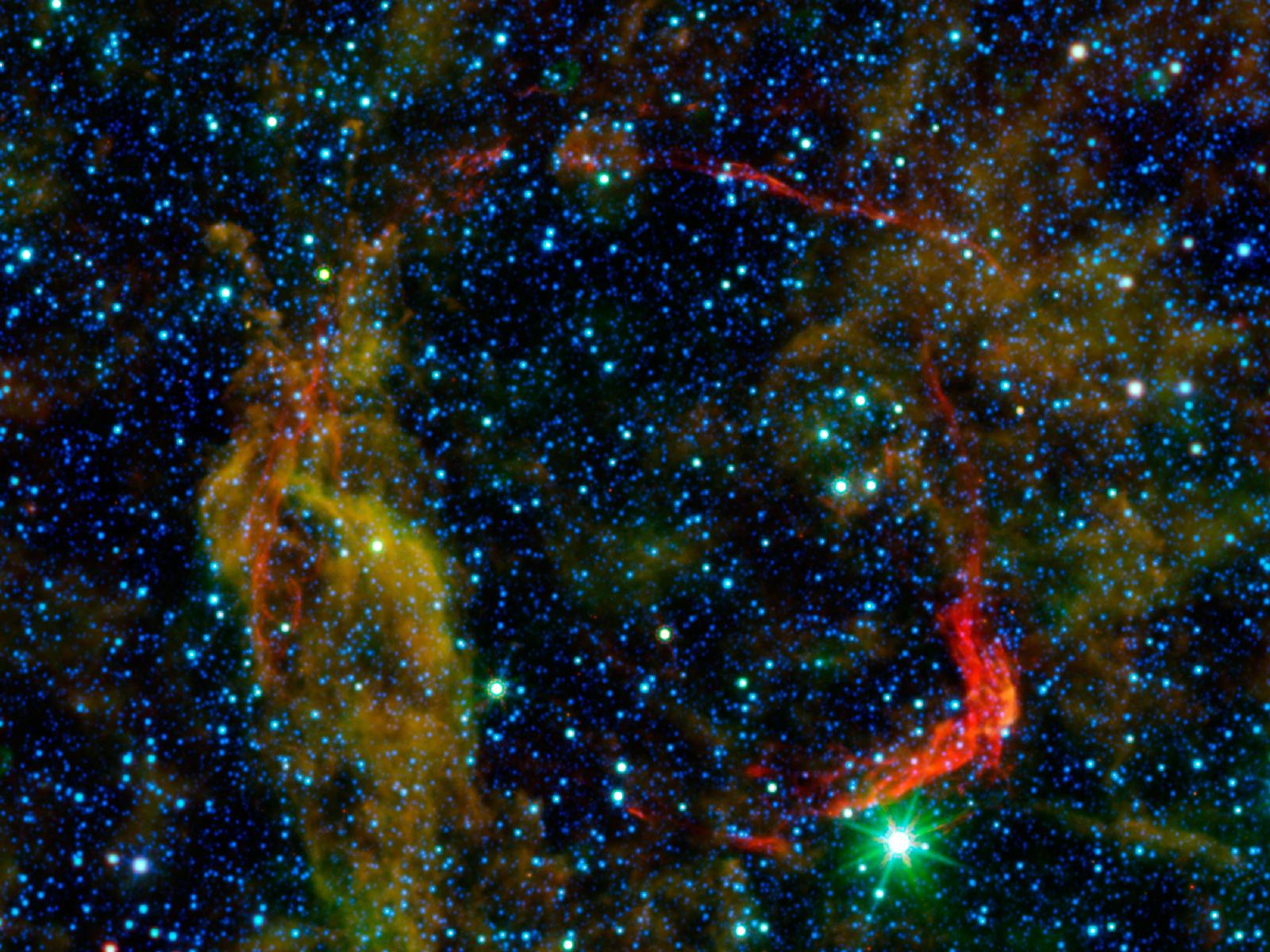
- When massive enough stars reach the end of their lives, they explode in a spectacular explosion: a core-collapse (or type II) supernova.
- But the stars that aren't quite massive enough instead blow off their outer layers to become a white dwarf, and if that white dwarf accumulates enough mass, it can make a supernova of its own: a type Ia supernova.
- But it can only cross over that threshold by either stealing mass from or colliding with a companion. What happens afterward? Can the companion survive? Let's find out!
In all the Universe, few events are as energetic as the violent, explosive death of a star or stellar corpse: a supernova. While some supernovae are triggered by massive stars reaching the end of their lives, others are triggered when a stellar corpse of a star that wasn’t quite massive enough to go supernova the first time — a white dwarf — gains enough mass to cross over a critical threshold into unstable territory: above the limit where it can remain a white dwarf. When such an event occurs, the white dwarf violently explodes, creating the second most common class of supernova: a type Ia supernova, or as I sometimes call it, a “second chance” supernova.
But that mass has to come from somewhere, and that’s almost always from another star or stellar corpse near the white dwarf: a companion star. While a type Ia supernova always destroys the white dwarf that initiated it, the companion can undergo many possible fates. How can we know what will happen to it? That’s what Denise Selmo wants to know, inquiring:
“I am writing this to ask you a question about Supernovae type Ia. So, when the dwarf star explodes what happens to the companion star? I have searched for the answer, but I have found different results such as: it explodes too, it is ejected and depending on the mass, it doesn’t explode. What can I consider correct?”
It’s a great question, and while many fates are theoretically possible, the Universe itself can help us understand what actually occurs in nature. Let’s find out together!
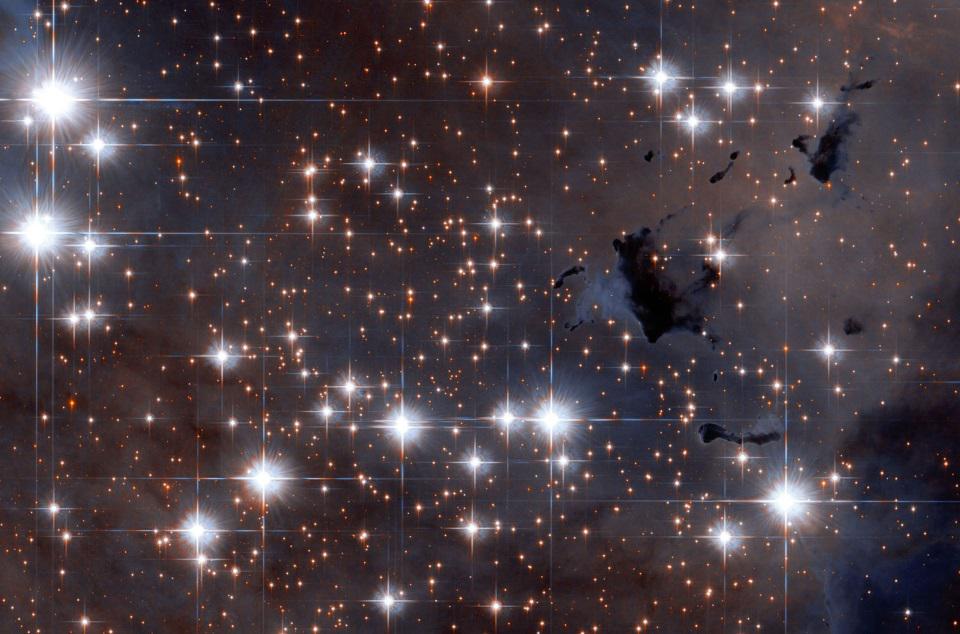
To understand what happens to stars when they die, we have to go way back to the beginning of the relevant part of the story: to a time when those stars are first born. Whenever any stars (other than the very first, absolutely pristine ones) are formed, irrespective of when they form or what types of material go into their formation, the new stars that are born come with a wide variety of properties. Two of those properties that are particularly relevant to the question of stellar death are:
- what mass the stars that are born possess,
- and how many stars are bound together in each star system that arises.
Overall, the most abundant type of star is the lowest-mass class: red dwarfs. About 75-80% of all stars that form are red dwarf stars, with 40% of the Sun’s mass or less. Only about 5% of all stars are more massive than our Sun, and only about 1-in-a-few-hundred are massive enough that, when they reach the end of their lives, they’ll die in a core-collapse supernova. However, there are a very large number of stars substantially more massive than the Sun, perhaps 1-3% of all the stars that form, that won’t quite make it to a core-collapse supernova, but after only a couple of billion years, will instead die a more gradual death.

The difference between a star that ends its life in a core-collapse supernova and one that doesn’t is a relatively subtle one: dependent on whether, after completing hydrogen fusion and then helium fusion in its core, the contracting core then gets hot enough to initiate carbon fusion. We can’t simply look at a star when it’s born and know whether it will go supernova, however. Stars born with as little as 8-10 solar masses might lose very little mass during their lifetimes and can conceivably initiate carbon fusion, which rapidly leads to neon fusion, oxygen fusion, silicon fusion, and then a core-collapse supernova.
On the other hand, some stars born with up to as much as 20-40 solar masses can sometimes not go supernova, because during the red giant phase (particularly during helium-burning), they’re capable of blowing off such large amounts of material that, by the time helium burning completes, they don’t have enough mass left to initiate carbon fusion. Simply knowing the initial mass of a star might tell us a great deal, but it isn’t enough, at least on its own, to allow us to determine what a star’s ultimate fate will be. Sure, stars with more mass burn through their fuel faster (and undergo stellar evolution more quickly), but once you reach the red giant phase, there’s enough variation that the star’s fate isn’t so easily predictable.

Which brings us to the second important point: most of us are biased when we think about stars, because we live on a planet that orbits only one star: the Sun. In reality, about half of all the stars that exist in the Universe are in binary, trinary, or even richer multi-star systems. On top of that, the stars in multi-star systems, although they can come with any sets of masses and sometimes do, are more likely to have stars of similar mass to one another, particularly for stars that are substantially more massive than the Sun.
In any multi-star system, any two stars that are close enough to one another have the potential to interact. The way that stars most frequently interact is through mass/material exchange, where the denser object — the one that holds onto its mass more tightly — generally strips mass away from the less dense, larger-volume object.
What this means is that the first star in any multi-star system to run out of hydrogen in its core is the one that’s most at-risk for losing mass to a denser companion. Because stars swell into red giants when they exhaust their core hydrogen, stars in binary systems can often lose mass, altering their fates and preventing them from experiencing a core-collapse supernova when they otherwise might have were it not for the presence of their companion stars.
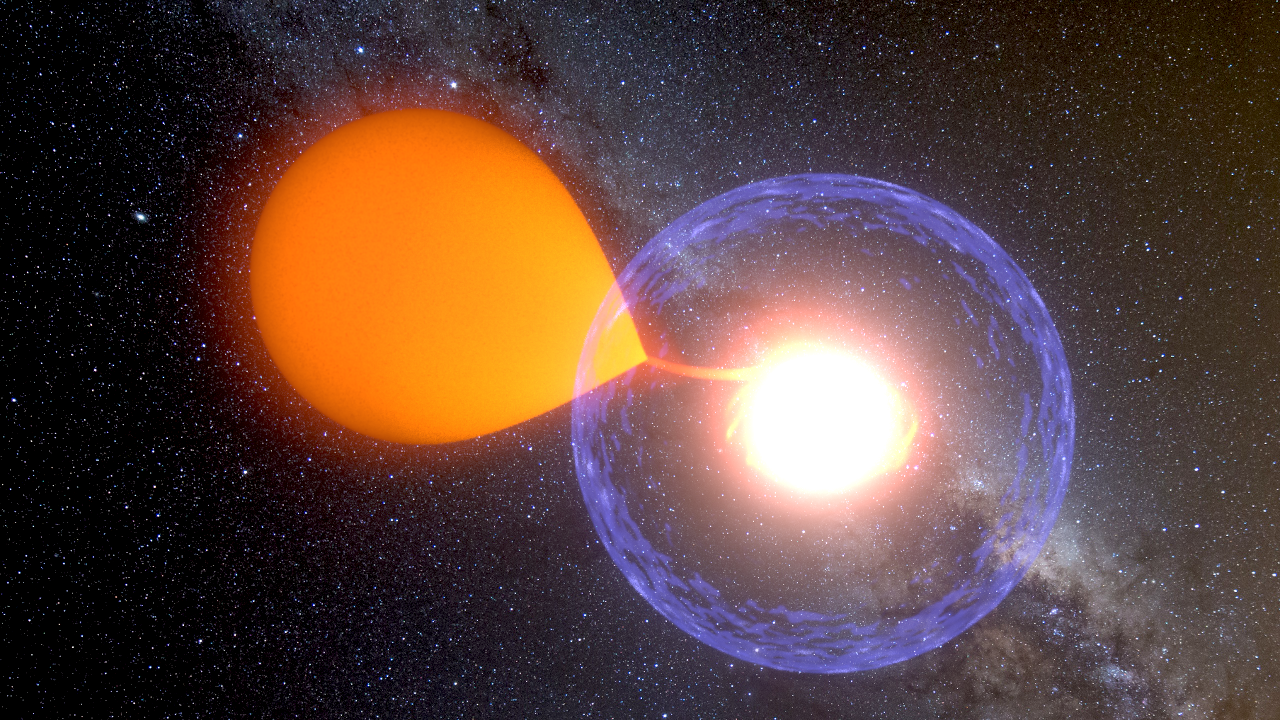
Which brings us, now, to the notion of a type Ia supernova. First, you need a multi-star system. Then, you need the most massive, fastest-evolving star to not undergo core-collapse, but rather to die in a more quiet fashion: blowing off its outer layers in a planetary nebula, while the core region contracts down to form a white dwarf. That white dwarf, if it were in total isolation, would remain stable for quadrillions of years, and would only evolve by slowly fading away into what will eventually be known as a “black dwarf.”
But if there are other stars around, there are three interesting possibilities that can trigger a type Ia supernova.
- Another star in that system can evolve into the giant phase, and the (very dense!) white dwarf can begin siphoning matter from that companion star, until the critical mass threshold is crossed and the white dwarf detonates.
- Another star in that system can fully evolve into a planetary nebula and a white dwarf, and these two white dwarfs can merge together, crossing the critical mass threshold and causing a detonation.
- Or another star in that system, one that hasn’t yet evolved into a giant star, can interact and merge with the white dwarf, pushing the total mass over the white dwarf’s critical threshold and causing a detonation.
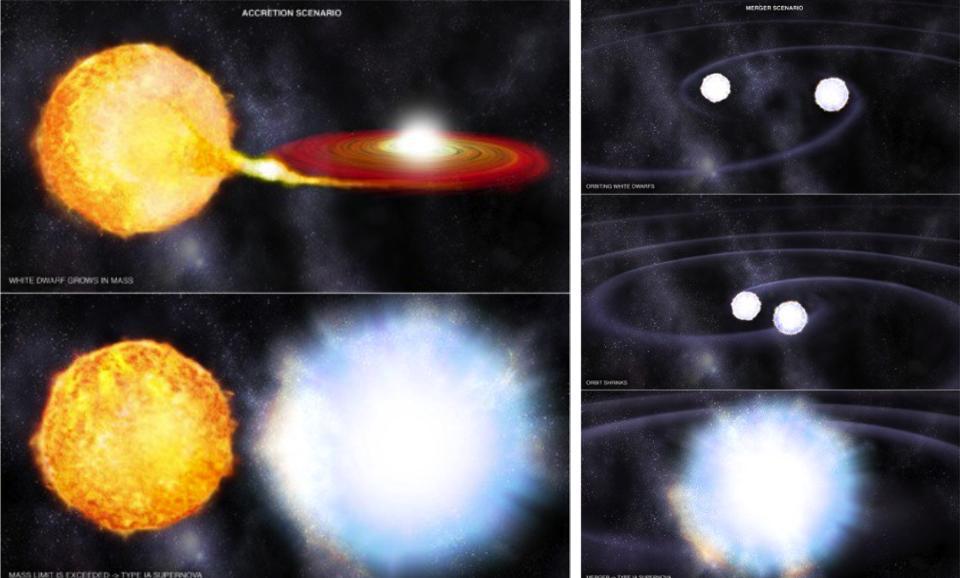
The key to detonation — the trigger for a type Ia supernova — is recognizing what will push it over the edge. Normally, a white dwarf is simply a very dense ball of atoms, where the atoms at the core of the white dwarf are being crushed by the pressure of all the other, exterior atoms bearing down on them under the influence of gravity. When a white dwarf is stable, it’s the degeneracy pressure of the electrons around the atoms, a quantum mechanical effect forbidding two electrons from occupying the same quantum state, that keeps the white dwarf’s core from collapsing.
However, if you add too much mass to the white dwarf, the Pauli Exclusion Principle is still at play, so the electrons still can’t occupy the same quantum state, so they get forced closer and closer toward (and into) the atomic nuclei that they orbit. As the person who first realized that white dwarfs should have a mass limit, Subramanian Chandrasekhar, first noted back in 1939:
“If the degenerate core attains sufficiently high densities, the protons and electrons will combine to form neutrons. This would cause a sudden diminution of pressure resulting in the collapse of the star to a neutron core.”
As it turns out, triggering electron capture at too great of a rate, which happens when the white dwarf crosses over what’s known as the Chandrasekhar mass limit, is how a type Ia supernova detonates.

What Chandrasekhar got wrong is the following: when the white dwarf collapses, it doesn’t form a neutron core; it instead heats up to a temperature sufficient to trigger carbon fusion. With such a dense core so rich in elements like carbon and oxygen, this initiates a runaway fusion reaction that absolutely destroys the original white dwarf entirely, causing it to explode. In all type Ia supernovae, the white dwarf that undergoes the supernova does not survive; it leaves no remnant behind and is entirely destroyed by the supernova itself.
But what about the companion that helped trigger the explosion?
The fate of that object depends very strongly on which of the possible methods for triggering this white dwarf explosion actually occurred.
- If matter is accreted from a companion star, the companion can frequently survive, often receiving a high-velocity “kick” from the supernova’s energetic output.
- If a second degenerate object (i.e., another white dwarf) merges with the white dwarf, the companion is expected to be blown apart in the supernova as well, although it’s theoretically possible especially if it was already very close to the Chandrasekhar limit that the detonating white dwarf can explode while leaving the lower-mass white dwarf intact, as the latter might not need to donate much mass to trigger the type Ia supernova.

What’s interesting about this realization is that the two main classes of type Ia supernovae can be discerned observationally in a couple of different ways. One thing we can do is look at white dwarfs in general, and see how many of them exhibit accretion features like a disk, which one would expect if they had a red giant companion, for example. Another thing we can do is look at all the supernovae we’ve observed within our galaxy, even from hundreds or thousands of years ago, and search for a potential companion that survived.
Searching through the sky and finding many supernovae remnants, some of which were recorded in ancient texts and some of which were not, a total of five type Ia supernova remnants have been identified in our galaxy, dating back to the years 185, 1006, 1572, 1604, and 1868. These five supernova remnants are all still visible to modern observatories, and only one of them has a candidate for having a “surviving companion” at all: Tycho Brahe’s supernova of 1572, where the star Tycho G has compellingly but controversially been put forth as the surviving companion star to the 1572 supernova event.

What makes Tycho G such a compelling candidate for being the surviving companion — and it’s not a giant star, but rather a more evolved version of a star similar to our Sun — is that it’s moving so fast: about three times the average speed of stars in its vicinity. It’s at the right distance to have originated from the 1572 explosion, and there are no red giant stars nearby at all. Of all the type Ia supernova remnants that we’ve ever discovered within the Milky Way, only the 1572 supernova has even a candidate companion survivor that’s been identified.
What conclusions should we draw from this, when we put all the pieces together?
One big conclusion that’s revolutionized how we view type Ia supernovae is that we now believe that “double degenerate progenitors,” where two white dwarfs merge together, are the main way that type Ia supernovae occur. Perhaps some ~80% of supernovae occur from this channel, and this is fascinating because the upcoming Laser Interferometer Space Antenna (LISA) mission will be able to detect the population of close-orbiting binary white dwarfs and determine how many there are. If most of the type Ia supernovae are indeed caused by merging white dwarfs, this mission will help us predict their rates and test that hypothesis.

But the truth of the matter is that supernovae are rare: perhaps only ~10 million of them occur each year within the entire observable Universe. On top of that, most supernovae that do occur are too far and faint to be seen, and most of the ones we do see are of the core-collapse variety, not the type Ia variety. Finally, almost all of the type Ia supernovae that we do see are from quite far away: too far for us to even examine whether they possibly have a surviving companion.
However, improved wide-field observatories, such as the Vera Rubin Observatory, are likely to find large numbers of new supernovae, and some of them will be relatively nearby type Ia supernovae. The ones that are close enough, with 30-meter class telescopes like the GMTO and the ELT, can be examined to see if there’s a possible surviving companion. And follow-up studies on Tycho G can determine whether it truly is a companion that survived, or simply an unrelated star.
If your type Ia supernova was caused by a merger or collision with another white dwarf, survival of the companion is unlikely. But if it was caused by siphoning mass off of a companion star, survival is possible, although the likelihood is uncertain. We’re right at the scientific frontiers here, and hopefully in another 10-20 years, we’ll have enough data to finally know the answer for certain. Until then, all I can do is bring you up to where we are today: we have lots of data and a consistent story, but it isn’t enough to fully answer how likely a type Ia supernova is to have a surviving companion!
Send in your Ask Ethan questions to startswithabang at gmail dot com!
